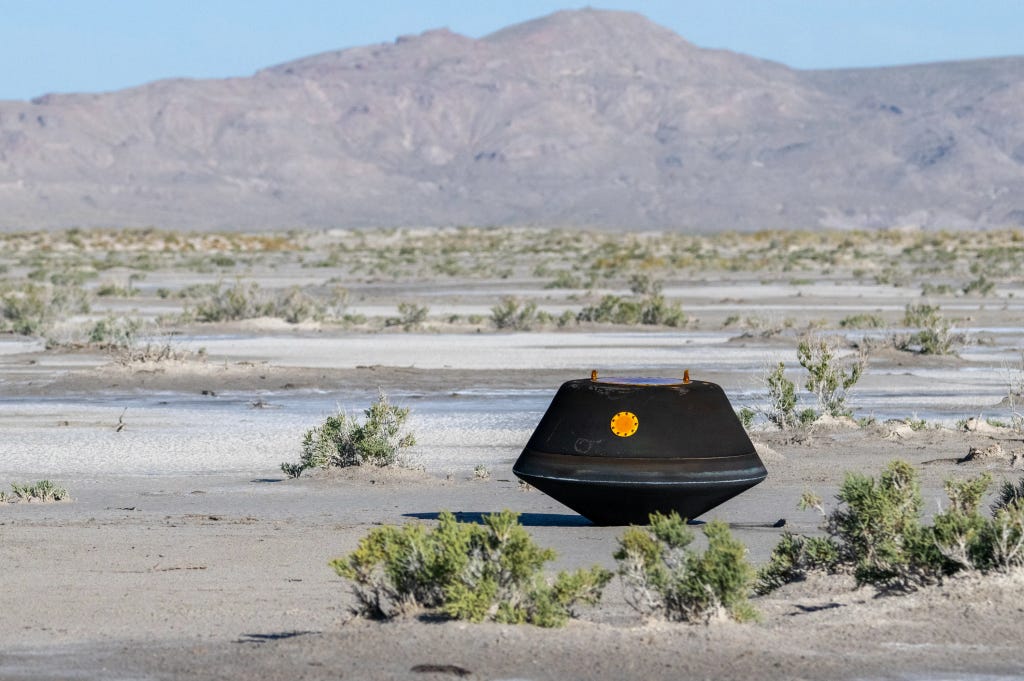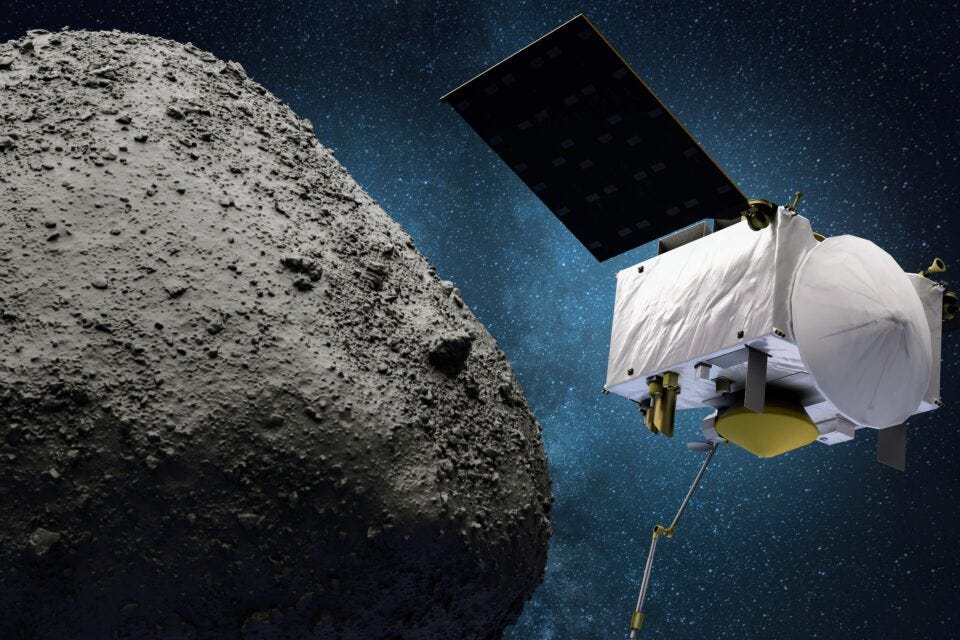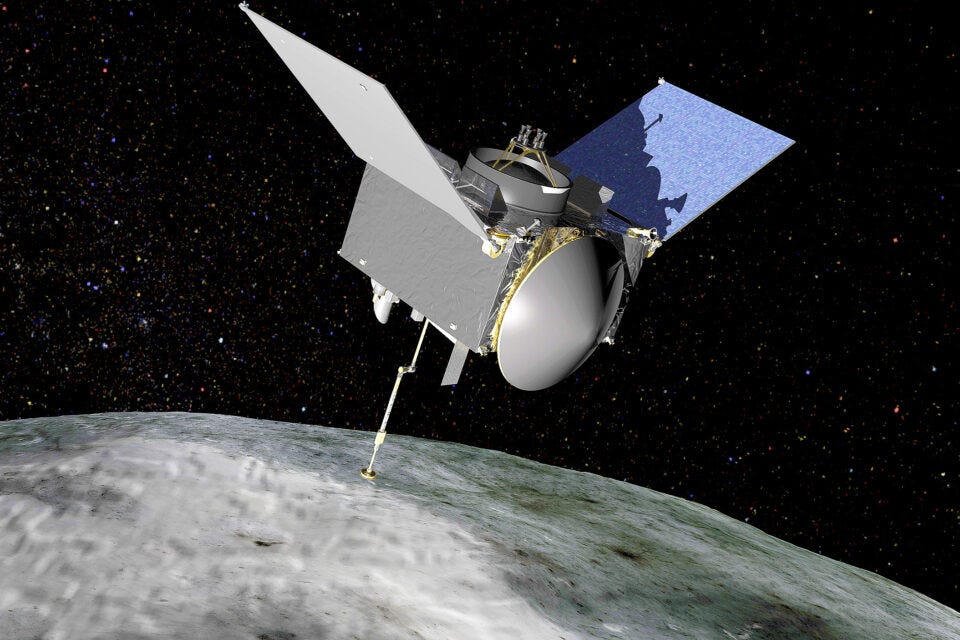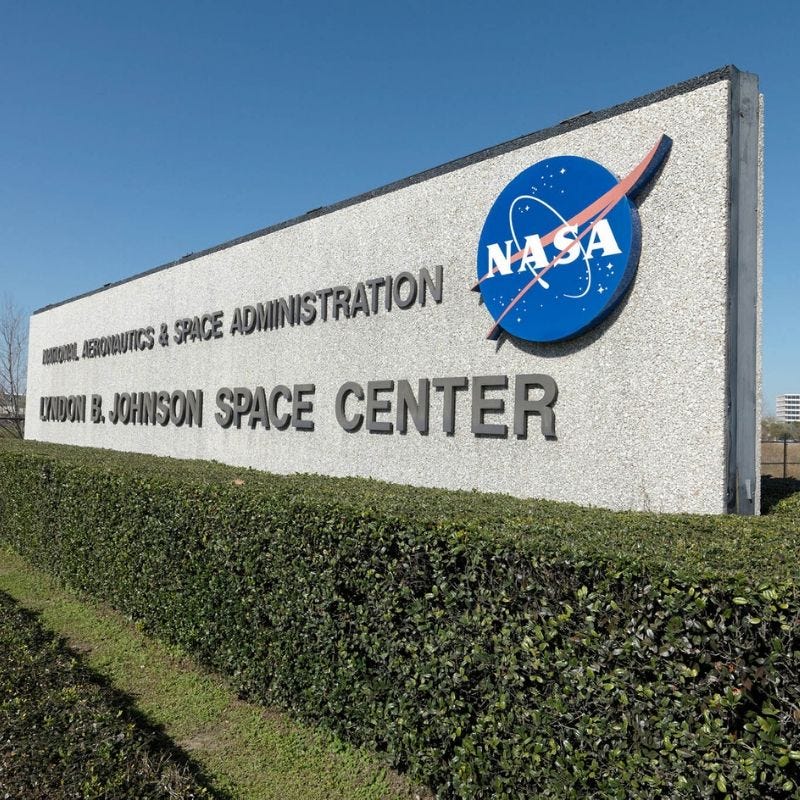Clue to Origin of Life on Earth — samples extracted by NASA from a 4.5 billion year old asteroid and brought back to Earth
Clue to Origin of Life on Earth — samples extracted by NASA from a 4.5 billion year old asteroid and brought back to Earth

Unearthing Secrets from the Cosmos: Ancient Asteroid Sample Sheds Light on Life's Building Blocks
In an astounding scientific breakthrough, NASA on Wednesday unveiled findings from a sample extracted from the ancient Bennu asteroid, thought to be 4.5 billion years old. This momentous revelation, made public from the Johnson Space Center, Houston, came seven years after a spacecraft was originally launched into space to collect material from this fascinating celestial object. The sample, which landed on Earth on 24th September, contains a wealth of information that may inch us closer to answering the age-old question: Why are we here?
The “near-earth” Asteroid Bennu
The asteroid Bennu orbits the Sun at an average distance of about 1 astronomical unit (AU), which is roughly the same distance from the Sun to Earth. However, its orbit brings it quite close to Earth at times. At its closest approach, known as perigee, Bennu comes within about 0.002 AU of Earth, or approximately 186,411 miles (300,000 kilometers). It's important to note that while this may seem close in astronomical terms, it's still a considerable distance away from Earth. Bennu is classified as a “near-Earth” object due to these relatively close approaches.
NASA’s OSIRIS-REx Mission
NASA's OSIRIS-REx mission1, launched in 2016, was designed to rendezvous with Bennu and collect samples from its surface. The spacecraft used a Touch-and-Go Sample Acquisition Mechanism (TAGSAM) head to collect rocks and dust by firing a blast of nitrogen, a practically inert gas, that lifted material from beneath the asteroid's surface. The mission has been hailed as a success, with the sample capsule safely returning to Earth on 24th September 2023, carrying a wealth of material that scientists believe contains key elements like carbon and water, possibly shedding light on the origins of life on earth.
A Rich Trove of Materials
Scientists were both excited and elated to find that the sample was not just any asteroid material; it was loaded with carbon, water, and other crucial elements. The material comprises nearly 5% carbon by weight, one of the highest concentrations ever to be studied in an asteroid. These findings indicate that asteroids like Bennu could have been instrumental in delivering the essential ingredients for life to Earth.
The Gathering Mission
The sample was procured by NASA’s OSIRIS-REx mission almost three years ago, in October 2020. To extract the sample, the TAGSAM head was extended towards the asteroid and a burst of nitrogen gas released under very high pressure. This action dislodged rocks and dust from up to 19 inches beneath the asteroid’s surface, capturing them into the TAGSAM head. Additionally, the mechanism had 24 surface contact pads to trap finer material.
The Science Behind the Sample
Since its arrival, researchers have been zealously analysing the material. Initial studies revealed the presence of hydrated clay minerals indicating abundant water, along with carbon in both mineral and organic molecular forms. There were also discoveries of sulfide minerals critical for planetary evolution and biology, iron oxide minerals responsive to magnetic fields, and other elements potentially significant for organic evolution.
Towards a Future of Discovery
The findings won’t just stop here. The research team plans to delve deeper into the chemistry that may have evolved on Bennu. The next focus will be on investigating whether the asteroid’s material contains peptides or chains of amino acids that are the building blocks of proteins. Such research could unravel mysteries surrounding the origins and evolution of life as we know it.
This ancient asteroid sample could also shed light on Bennu's history, offering insights into how it evolved over time. Understanding its composition could be crucial for future space missions, particularly those concerned with averting asteroid impacts on Earth.
For Generations to Come
Scientists aim to study the sample for the next two years in a specialized clean room. However, the research will go beyond this. A significant portion of the sample will be preserved and shared with scientific communities globally, including mission partners at the Canadian Space Agency and the Japanese Aerospace Exploration Agency. About 70% of it will be kept intact for future generations, who, with the help of advanced technology, can continue to extract knowledge from this extraterrestrial marvel.
Could be the Vital Clue
In a world rife with uncertainties, this celestial 'treasure trove' offers the tantalising promise of unlocking long-held secrets about our universe. It has the potential to dramatically alter our understanding of life's origins, marking it as a truly 'precious gift from the cosmos.' While humanity explores celestial phenomena like black holes and pulsars, located millions of light-years away, and delves into the interstitial space between sub-atomic particles measured in picometres, the fundamental question of life's origins on Earth remains elusive. NASA's sample from the ancient asteroid Bennu could provide a crucial piece of evidence needed to unravel this enduring mystery that has captivated human imagination since the dawn of history.
Origins, Spectral Interpretation, Resource Identification and Security – Regolith Explorer.








